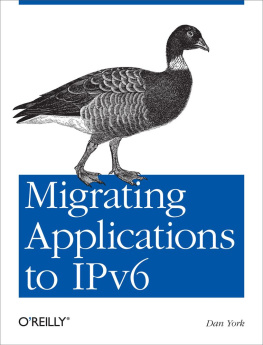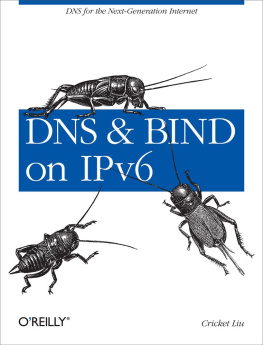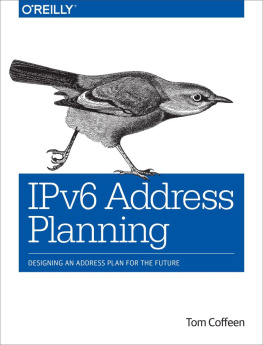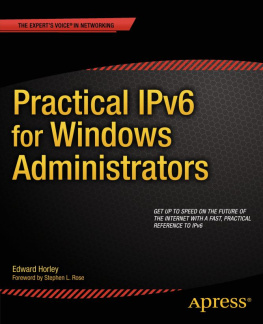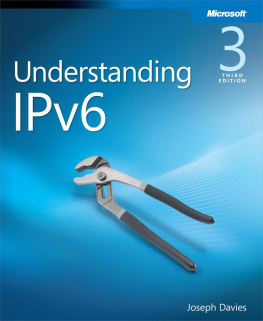Preface
Many readers may be awaiting the third edition of IPv6 Essentials . The event on February 3, 2011, when the IANA (Internet Assigned Numbers Authority) finally announced the depletion of the global IPv4 address pool changed the world. People seemed to wake up and realize it was high time to start planning for IPv6. But where to start?
So we decided to wait to update IPv6 Essentials (since it is really not that outdated) and instead provide a book to help with this planning. After all, before you need the bits and bytes of the protocol, you need to do some planning.
In this book, I try to put everything I have learned in more than 10 years of studying, working, playing, teaching, and consulting with IPv6 at your disposaleverything that is relevant to help you understand what it takes to plan the integration of IPv6. The book is basically a summary of all the answers to the most frequent questions I get when talking with customers. And I hope it also makes you feel a little enthusiastic about the opportunities that IPv6 offers. So, with that, I wish you a good read and lots of fun learning about and planning for IPv6.
Audience
This book is written for anyone who is interested in learning how to best plan for the integration of IPv6 in an enterprise. The larger the network, the more complex the task adding a new transport protocol affects every single network component. You dont have to be a tech-geek to love this book (although if you are, I hope you love it too). It is more about what it takes to introduce IPv6 in an enterprise, written for CTOs, decision makers, IT managers, people who architect and design networks, and people who will be leading IPv6 projects, as well as for all the members of the planning team.
About This Book
Many of the challenges you will face are on the nontechnical, organizational level. Having worked with large enterprises for many years, I know how difficult it can sometimes be to get all the different IT groups around one table and have them talk and listen to each otherand this is exactly what you will have to do to plan for IPv6. This book covers IPv6-specific topics so you understand what is involved in the process, as well as what questions you will have to ask to develop a high-level strategy. Planning for a successful integration is more about asking the right questions than finding quick answers.
What this book will not give you is a one-size-fits-all strategy. As you will understand after reading this book, there is no single best way that fits every organization. Each network is different, each organization is unique, and there are so many different aspects that factor into the planning that each path from todays IPv4-dominant network to an IPv6-dominant network is unique also.
Assumptions This Book Makes
This book assumes that you have a good understanding of IT and technology projects. It doesnt replace education and experience in project planning; it outlines only what is specific to planning for IPv6. You should have some general understanding of networking concepts and IPv4 networks. You dont necessarily need a lot of understanding of IPv6, although it makes all the discussions more meaningful if you do.
Contents of This Book
This book is organized into three chapters:
This chapter discusses the business case and has two target groups. You may be insecure because of all the contradictory information you hear, and about the common belief that IPv6 has no business case. I discuss this issue in a larger context, which usually resolves the contradictions. This chapter can also be helpful if you know that introducing IPv6 is business-critical, but you need arguments to convince your boss or your business partners. An important part of this chapter covers the opportunities IPv6 offers. Instead of focusing on the pains and risks of IPv6, it is much more helpful to understand the opportunities it presents so you can make best use of its potential. You are building your next-generation network, after all.
This chapter covers the planning itself, starting with tasks that should be performed in advance and then moving on to creating a high-level design and conducting a network assessment, how to evaluate vendors and products, and how to build labs and test. It also describes some general decisions and considerations you will face when defining your high-level implementation plan, such as routing protocol choices, security designs, DNS issues to understand, how to create an IPv6 address plan and how to manage IPv6 addresses.
This chapter provides a high-level discussion of the available integration and transition technologies. It is not intended to be an in-depth technical guide. The technologies are described in an overview so you can clearly understand what is available and when to use these mechanisms.
Conventions Used in This Book
The following typographical conventions are used in this book:
Italic
Indicates new terms, URLs, email addresses, filenames, and file extensions.
Constant widthUsed for program listings, as well as within paragraphs to refer to program elements such as variable or function names, databases, data types, environment variables, statements, and keywords.
Constant width boldShows commands or other text that should be typed literally by the user.
Constant width italicShows text that should be replaced with user-supplied values or by values determined by context.
Tip
This icon signifies a tip, suggestion, or general note.
Caution
This icon indicates a warning or caution.
Using Code Examples
This book is here to help you get your job done. In general, you may use the code in this book in your programs and documentation. You do not need to contact us for permission unless youre reproducing a significant portion of the code. For example, writing a program that uses several chunks of code from this book does not require permission. Selling or distributing a CD-ROM of examples from OReilly books does require permission. Answering a question by citing this book and quoting example code does not require permission. Incorporating a significant amount of example code from this book into your products documentation does require permission.





